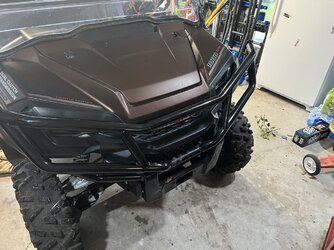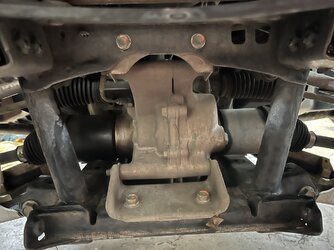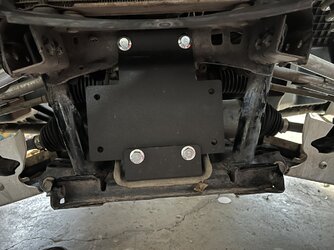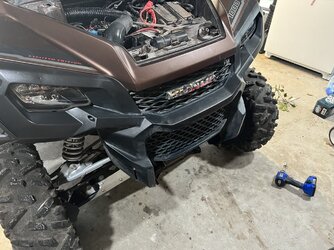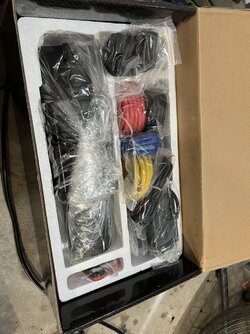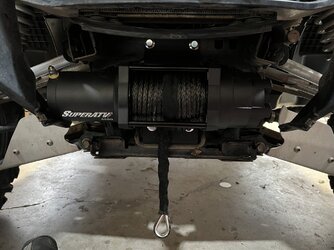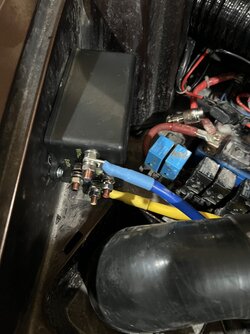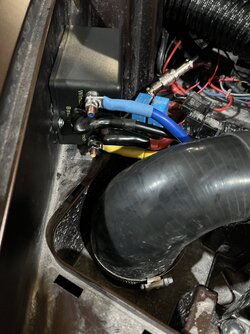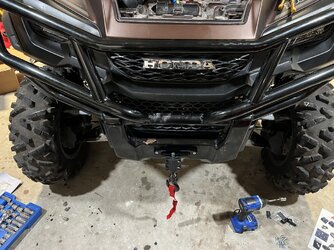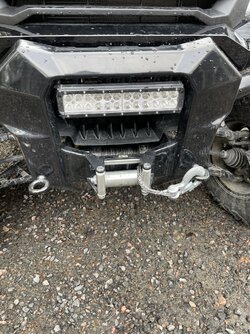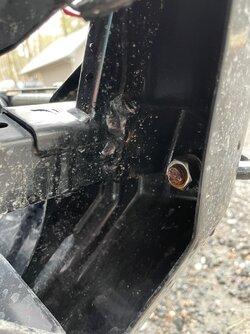Couple of points. There's a general rule for sizing winches, that is 1.5 times the vehicle gross weight . . . I've also heard 2 times. The Honda installed winch, that came on my '21 SE is a Warn 4500, the vehicle weighs just under 2000 lbs. Last week I used my P1000 to pull my tractor out of the mud, and at a 25 degree uphill to boot. The tractor weighs about 3000 lbs. I used a snatch block at the tractor tow bar and ran the winch line back to a shackle mounted to the front bumper which bolts through the thin bumper and a thick doubler - they are doubtless the weakest link, though I mounted the shackles right next to where the bumper's frame mount brackets are welded. I had the back of the Honda strapped to the trunk of a large Jeffrey pine just uphill or it would have simply pulled the Honda down to the tractor! Something was going to give, I thought, so paused several times as I added load. I watched those bumber shackles closely and all was fine as the little Honda yanked the tractor slowly out of the mud!
The limiting factor with using a winch that is larger still, is one of available electrical power. My 4.5K winch can draw something like 252 amps at full load - over 30 amps while reeling in a slack line. I have a second battery, but even that and engine running, an over 200 amp load is gonna decimate the available voltage very quickly. When that happens, guess what . . . I no longer have a winch that is pulling at it's rated power. That will happen even faster when running a 6,000 winch that can draw up to 328 amps or so. Bottom line, bigger sounds better, but without lots of battery capacity, it may not be what it seems. (Note too, the max 50 amp alternator capacity is only available at something like 5,000 rpm, not with engine at idle.)


